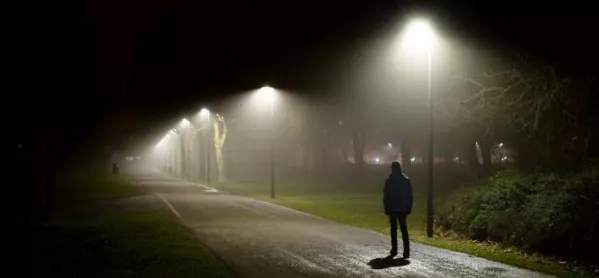England’s children’s commissioner has warned that the same mistakes that allowed child exploitation scandals are being repeated when it comes to gangs.
A new report from Anne Longfield’s office, published today, estimates that some 27,000 children across the country are part of a gang.
The study echoes previous research which has linked rising levels of knife crime to a surge in the number of exclusions.
Using official statistics, it found that self-reported gang members aged 10-15 were 5.5 times more likely to have been excluded or suspended in the past year.
It said many parents described exclusion as a “trigger point”, which pushed their children from some involvement into full gang membership.
The report estimates that around 34,000 children, who are either gang members themselves or know someone who is, have been victims of violent crime in the past year.
Gangs and school exclusions
But only a fraction of these children are known to authorities, many of which have no idea of the number of gangs in their area or what they are up to.
The report cites the case of “Chris”, whose short life was marred by domestic abuse and exclusion from school before he was shot dead aged 14 in an East London playground in 2017.
“This report shows there are thousands of children just like him, putting themselves in the same kind of danger,” said Ms Longfield.
“The government needs to face up to the scale of this challenge, and ensure both the priority and resources are given to helping these children.”
Her report says government red-tape, fragmentation of policy response and a lack of funding mean that many local children’s boards have little or no understanding of the gangs in their area.
It suggests that these safeguarding boards are also frequently failing to investigate properly child deaths where gang violence was a factor.
The scale of the gang problem
“I am worried that all the mistakes that led to serious safeguarding failings in relation to child sexual exploitation in towns and cities up and down the country are now being repeated,” said Ms Longfield.
“Many local areas are not facing up to the scale of the problem, they are not taking notice of the risk factors in front of them, and they are not listening to parents and communities who ask for help.”
She recommends several measures to tackle the problem of child gangs, which include:
- The government needs to make child criminal exploitation a national priority, and lay out clear expectations about the role of all organisations working with children.
- Joint inspections between Ofsted, the Care Quality Commission and the police and probation inspectorates should be rolled out across England, starting with the areas with high gang violence that were unable to respond to the information request for this report.
- More emphasis on the early years within the Serious Violence Strategy, with the Department for Education setting a clear target and plan for reducing the number of children beginning school with very low levels of development, along with a national plan for improving special educational needs identification in the early years.




